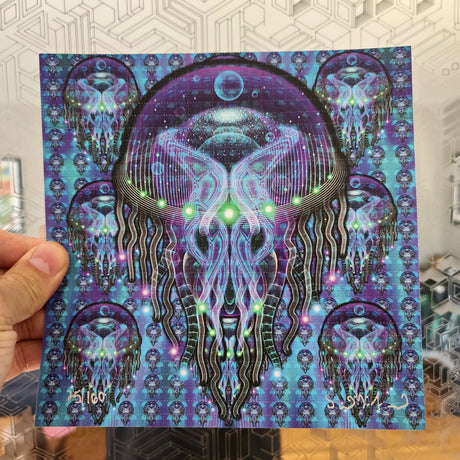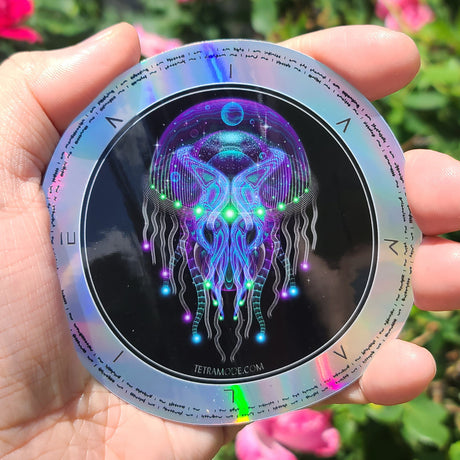
Psychezoa Luminosum is inspired by one of my all-time favorite spirit animals—the mesmerizing, alien-like jellyfish. These oceanic beings fascinate me endlessly. With their translucent membranes and bioluminescent biology, it’s almost hard to believe they’re part of our world—they feel more like creatures from James Cameron’s Avatar than Earth’s oceans.
In this piece, I set out to capture their otherworldly, cosmic presence. A swirling galaxy radiates from the center, while the jellyfish’s tendrils are rendered with an intentionally extra-alien aesthetic—flowing, surreal, and alive.
The jellyfish reminds us to move with the currents of life, not against them—to flow effortlessly, even when caught in chaotic crosswinds. It’s a creature of grace, presence, and quiet resilience.
Explore the Details! →


















